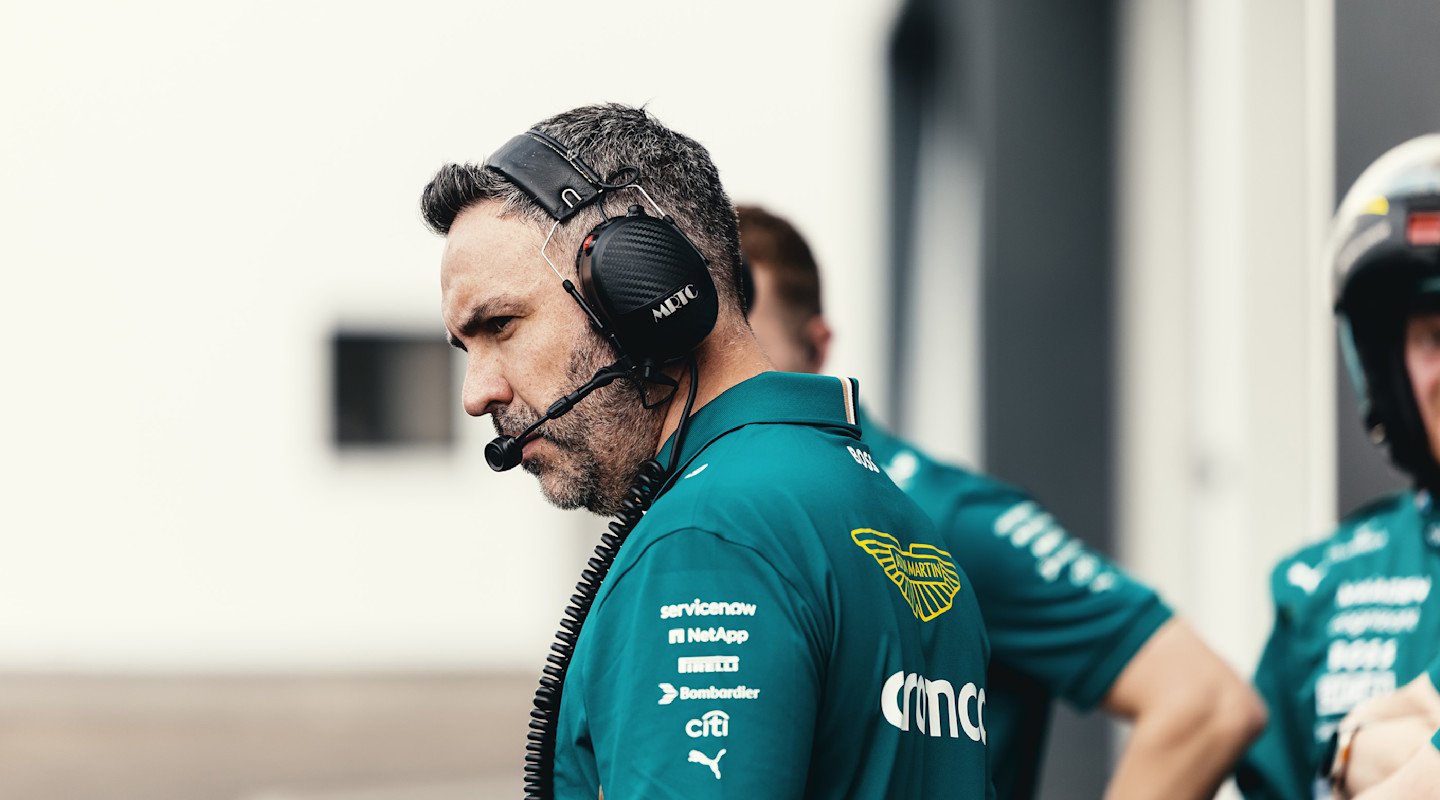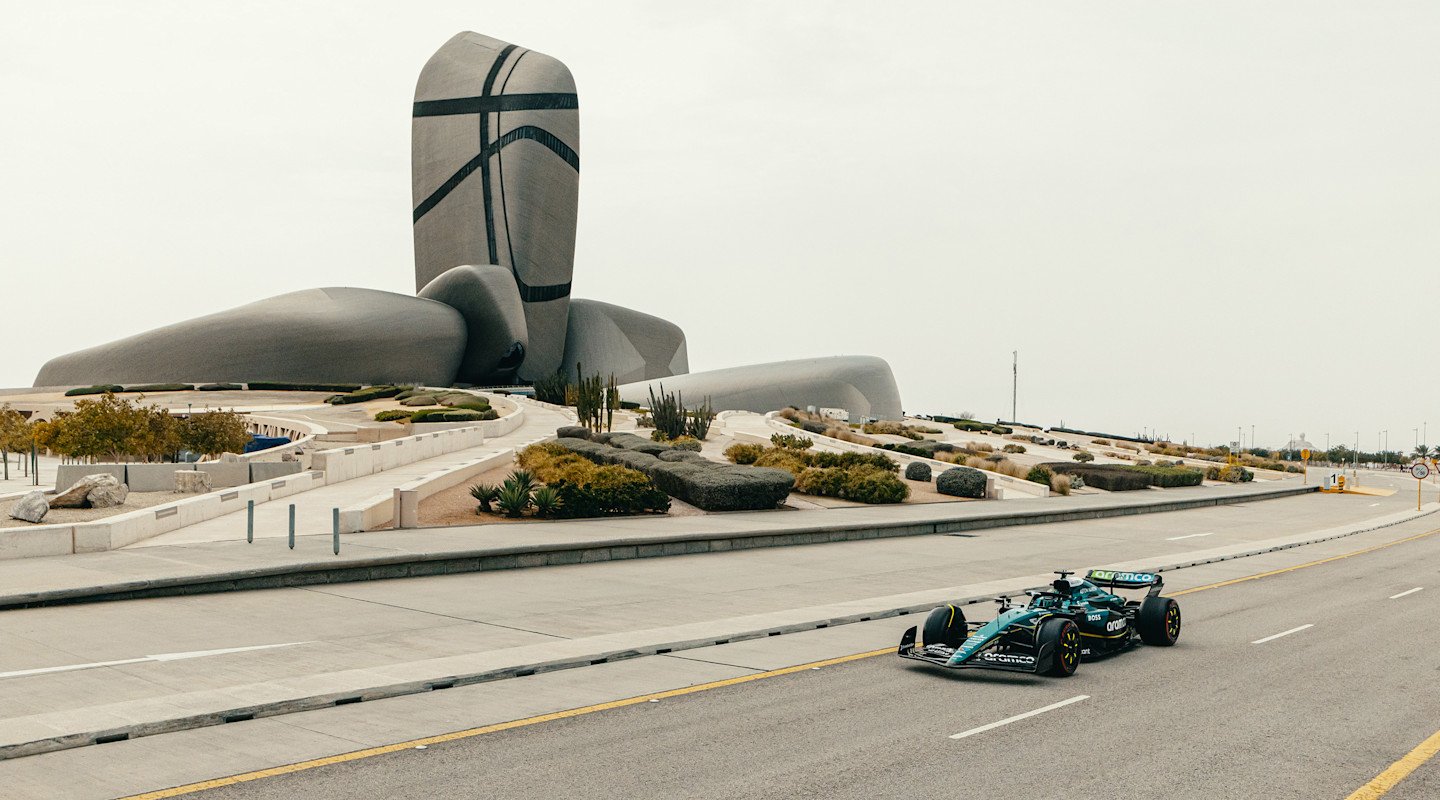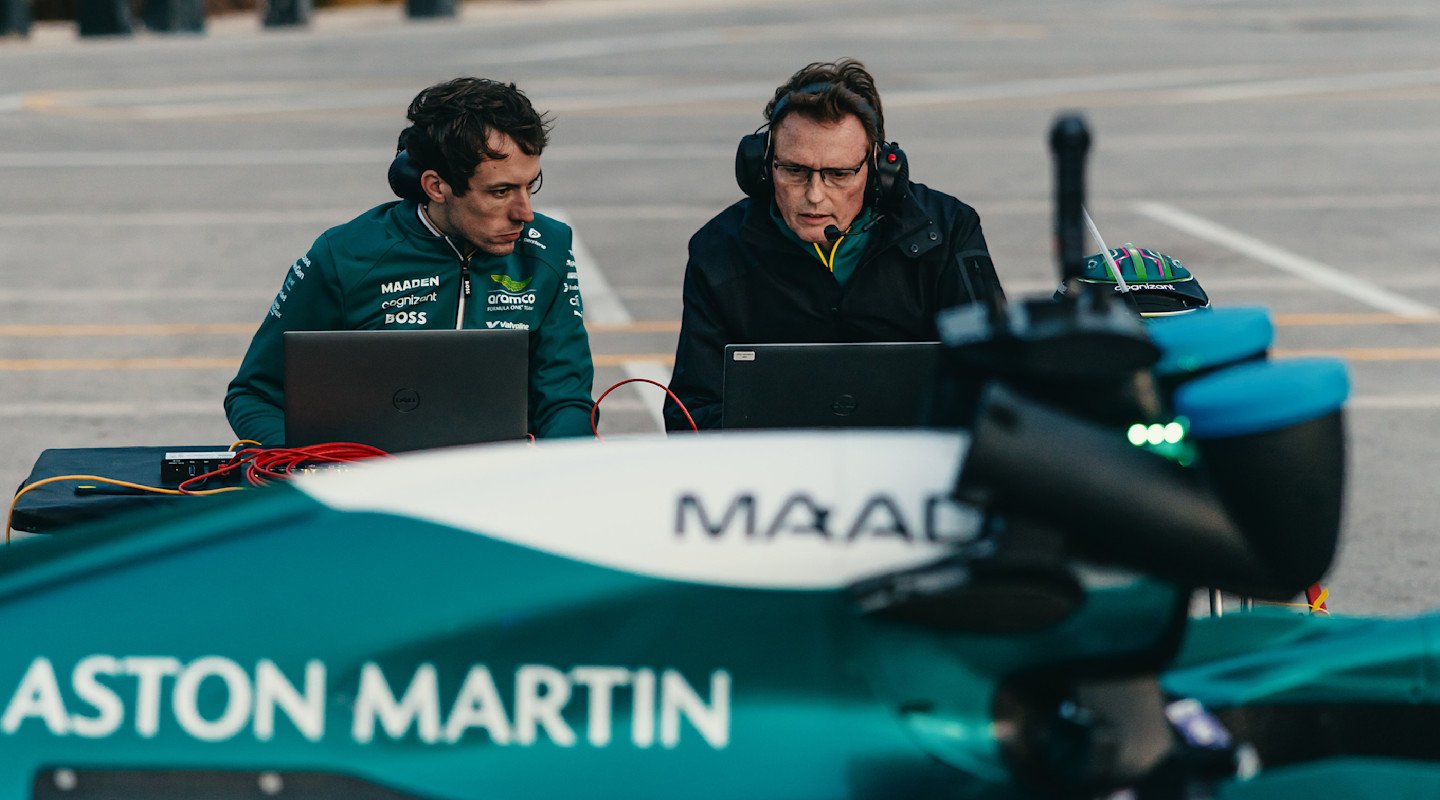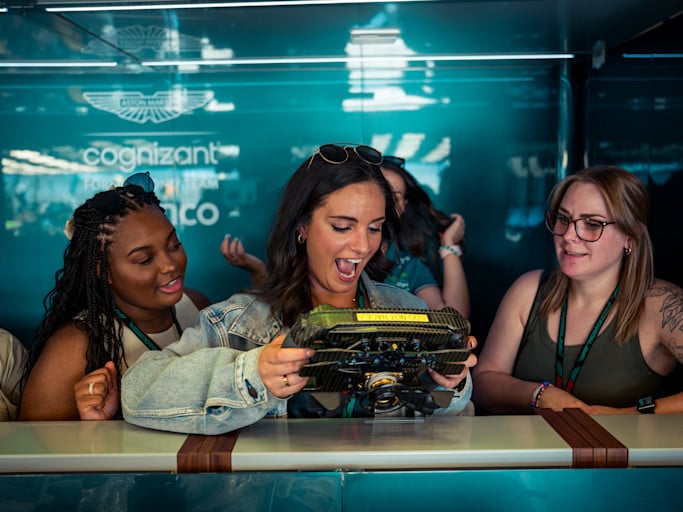
What goes into planning a Formula One demo run? After Head of F1 Academy and Driver Ambassador Jessica Hawkins recently took a tour across Saudi Arabia at the wheel of the AMR23 alongside our Title Partners Aramco, Manuel Aboy, Performance Engineer for our F1 Evolution team, provides the answers.
By now you've probably seen the video of Jessica's trailblazing run across Saudi Arabia, making an array of stops everywhere from our Title Partner Aramco's home, all the way to the Jeddah Corniche Circuit on the other side of the Arabian peninsula.
F1 cars don't enjoy a quiet retirement. They continue to perform long after their final race, appearing on static displays and demo runs, flying the flag for the team, often repainted in the latest livery.
Demo runs are one of the best things the team gets to do: not every country gets a Grand Prix; not everyone can afford to go to a race, but demo runs fill in many of the gaps. Our cars go to some wonderful places, well beyond F1's traditional heartlands, and take the sport on the road to places populated by fans who wouldn't otherwise get an opportunity to see real, live F1 machinery – but it isn't an exercise without challenges.
An F1 car is a machine built for outstanding performance within a controlled, and very narrow, range of conditions. Putting it on a city street, notwithstanding the growing number of F1 street races, fundamentally takes it out of its comfort zone and makes it do things it wasn't designed to do – all of which requires very careful planning.
After Jessica took the AMR23 across Saudi Arabia, Manuel Aboy, Performance Engineer for our F1 Evolution team and the man who led the demo, gets into the detail of what goes into running an F1 car beyond the confines of the track.

When we take a car designed for a racetrack, and run it in demo mode on public roads, what are the primary considerations that impact the setup and preparation of the car?
"There are two primary things we need to consider: public roads always have much less grip than a racetrack because the asphalt isn't as good, and they usually aren't flat.
"Lower grip means you are not able to push as hard as you would on a circuit, and so you need to make sure you boost tyre temperatures and pressures to make sure the tyres get into their operating window.
"If you look at a race like Monaco, for example, which is held on public roads, it's often the case that you struggle to build up tyre temperature. The same is true, and exaggerated, for demo events, and so you boost the pressures and increase the temperatures so the drivers will feel a little bit of extra grip from the tyres straight away.
"Also, F1 tracks are usually very flat, whereas public roads tend to have bumps – and also crown in the centre to help drainage – so you have to raise the car as much as you can to avoid touching the bumps. Bumps make the car jump a lot, and when it jumps, an F1 car loses a lot of [aerodynamic] load. Under those circumstances, it's very easy to lose the rear, spin and maybe hit a wall.
"On top of these, the power unit has an operating window for temperatures and, at a circuit, those are easy to maintain, because with higher speeds comes better cooling. During a street demo the car is going slower – probably to a maximum of 150km/h – and so there's much less airflow, therefore much less cooling and a higher risk of overheating under certain conditions. So, you need to open up the radiators for as much airflow as possible, and really control the temperatures in the PU.
"These are the sort of things you have to face, though every demo is different, and the challenges change from location to location – but getting the ride height as high as possible, and boosting tyre pressures and temperatures, those are constant considerations."
The F1 calendar features several different street circuits. Do the setup options for those races inform setup for these demo runs? Is there any useful data we can use?
"There is. Whatever you can take away from somewhere like Monaco, you try to apply at a demo, but there are very different goals. Racing setup is about achieving the best performance, whereas the number one rule at a demo is returning the car in one piece. You set the car up to avoid damage and minimise risk.
"This isn't straightforward: circuits have gravel and escape roads. Monaco isn't a great example but even it has escape roads. Demo runs don't have that level of protection, so you always have to limit your level of risk."

Racetracks tend to be a well-understood location at which teams know what to expect. Demos, in contrast, are usually a voyage into the unknown with a route never previously used by an F1 car. How do you prepare for taking the car somewhere entirely new?
"Some demos, of course, are on circuits, and those are quite easy, but when going somewhere new, and somewhere that isn't a racing circuit, you need to prepare as much as you possibly can. You need to study the layout of the course, and you need to understand what kind of cooling the car will require.
"But preparing the car isn't the whole job, it's often the case that you need to have extra flexibility in your plans. Routes can change due to weather or the filming crew, if there is one, may want to shoot extra runs or for the car to do something slightly different – so you need to improvise and adapt.
"Challenges like this really require a crew and driver to be well-briefed and understand what's happening. So, in the days leading up to a demo, that's what we do.
"The first thing is producing a layout everyone studies, then we go around the circuit a few times in a road car, during which I'm taking note of anything I think could cause damage. Once Jessica – or whoever is driving in the demo – becomes available, we have a briefing in which I use the map we've produced to outline what we're going to do – and then we take the road car out again and do exactly what we've planned for the F1 car in it – whether that's driving the route or stopping to do doughnuts."
What are you typically noting when you're touring the route?
"I'll give you a couple of examples. When F1 races on a street circuit the drain covers are always welded shut, to prevent the cars sucking them up and destroying a floor. We've all seen the damage caused when those welds fail. Obviously with a demo run, the drain covers aren't welded down, and so they need to be avoided. When the driver prepares in the road car, I'll be drawing their attention to where those drain covers are. Of course, sometimes those are impossible to see from the cockpit, and we simply have to cover them with a traffic cone.

"Another example are the cats-eyes in the middle of the road, demarking lanes. If the car crosses from one lane into another, and hits one of those metal boxes, there's a risk of damaging a tyre, or even having a blowout. It's a risk you have to monitor, and like every other risk, it's up to the engineer to recognise it and advise the driver – probably in this case telling the driver to stay in one lane – and then making sure the reconnaissance they do in the road follows the exact plan they have been briefed on.
"There's a lot of work that goes into executing a demo run, and we approach it as meticulously as a Grand Prix to ensure that, when the time comes, we can put on a show just as Jessica did in Saudi Arabia."
A trailblazing demo run
From desert highways to city skylines with Aramco. The team returns to Saudi Arabia with a road trip like no other.

I / AM membership
The ultimate fan experience.
Get closer to the team with unparalleled access, behind-the-scenes insights and once-in-a-lifetime experiences, and enjoy exclusive competitions, rewards, offers and more.








































